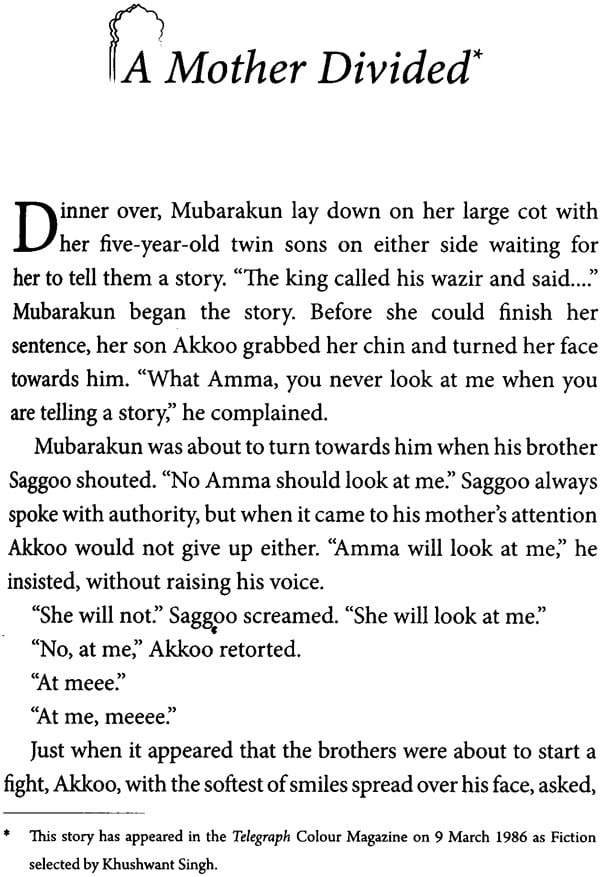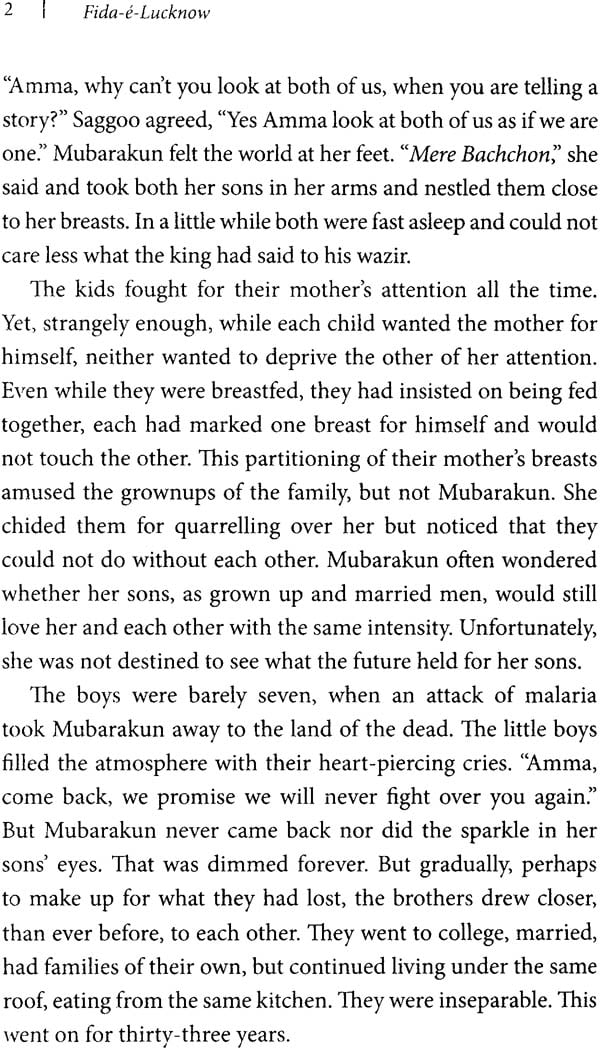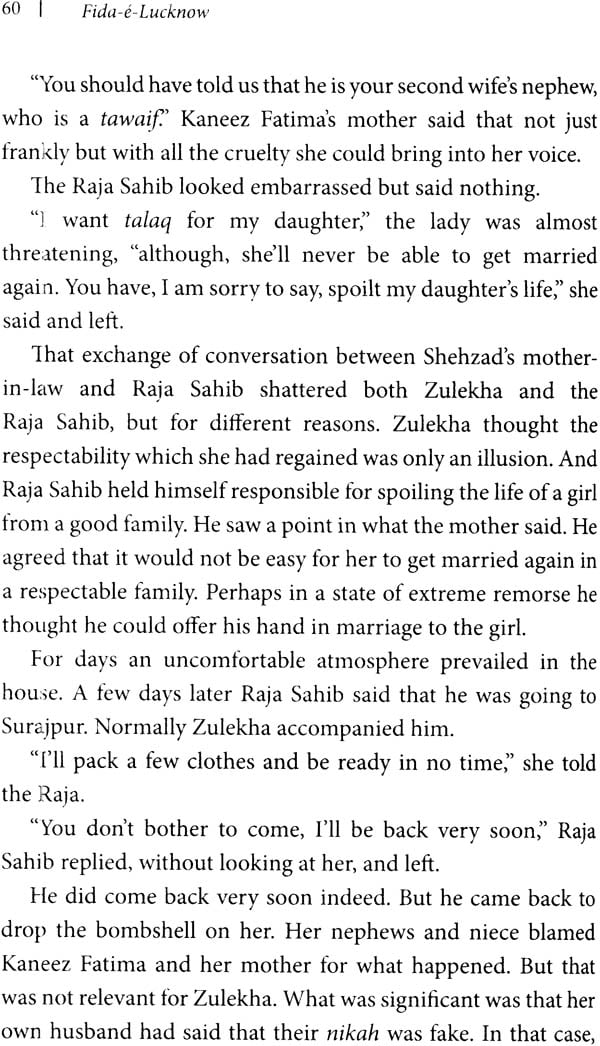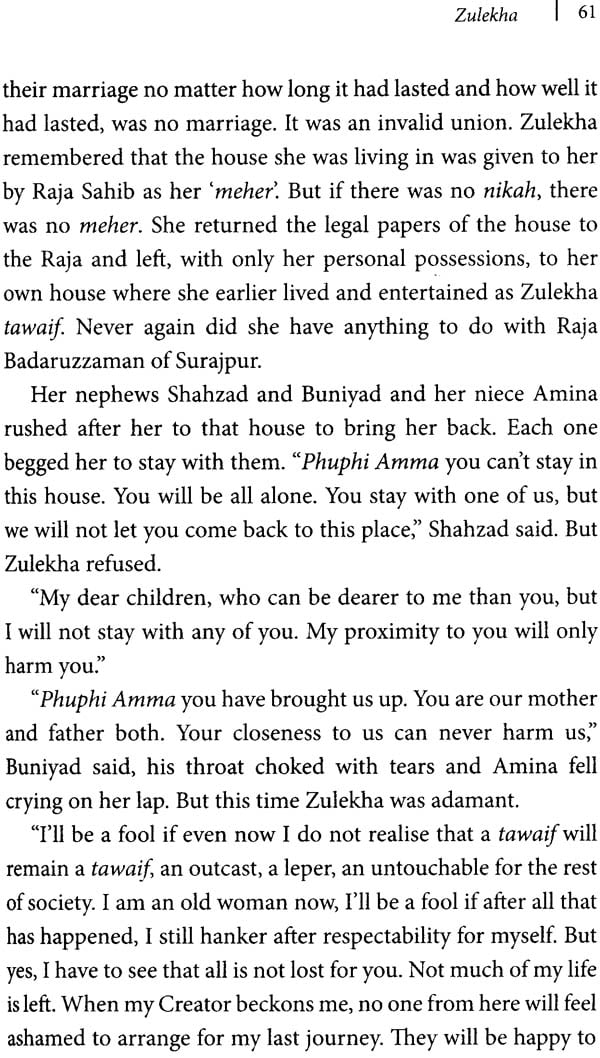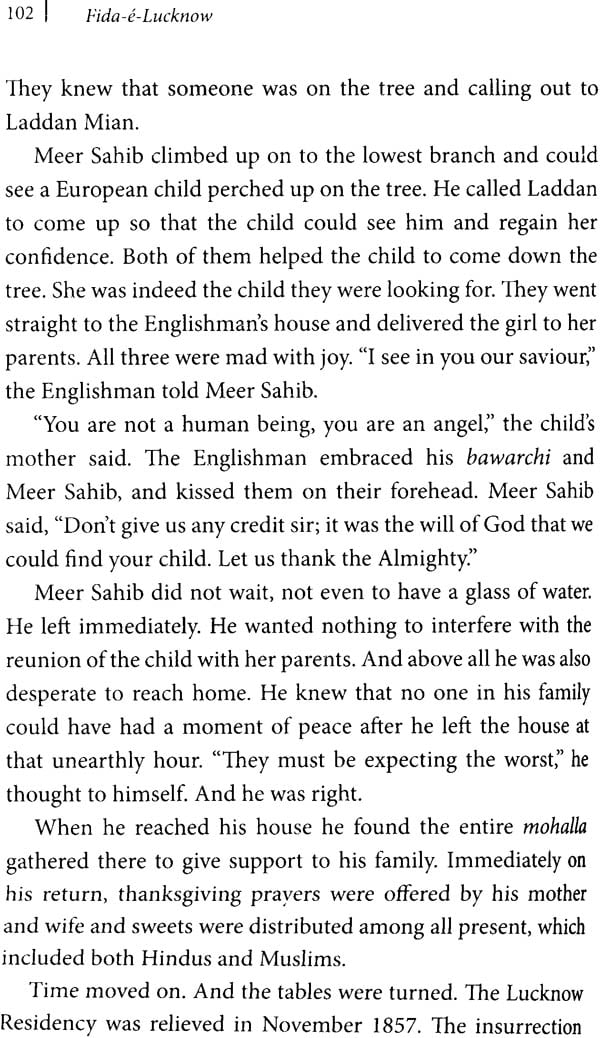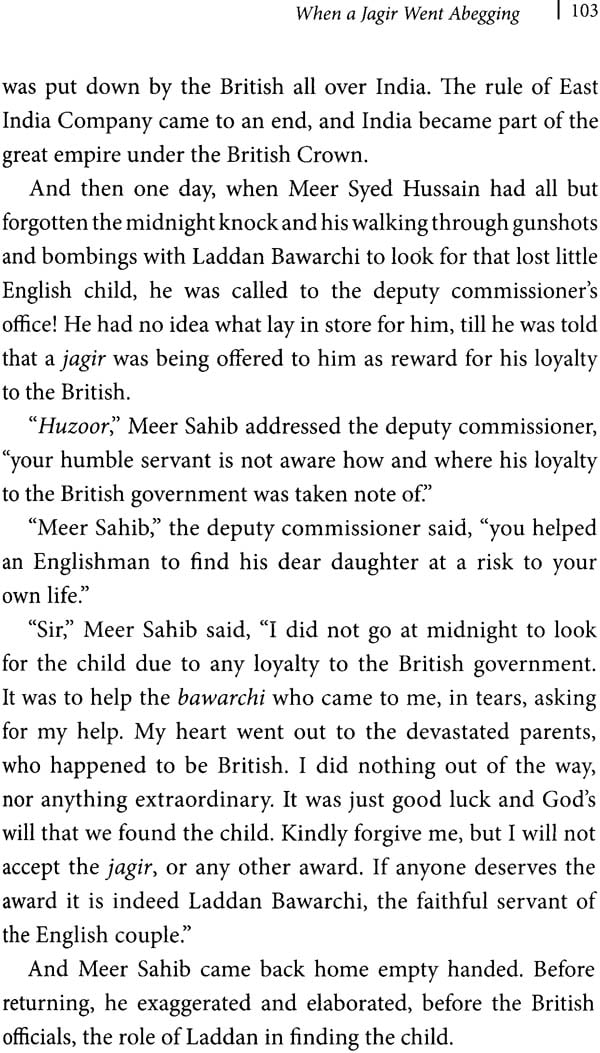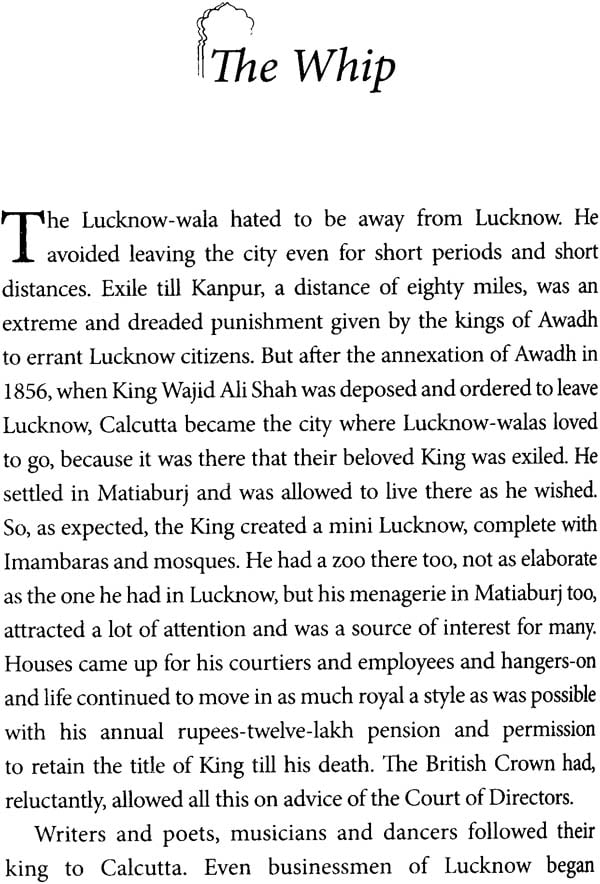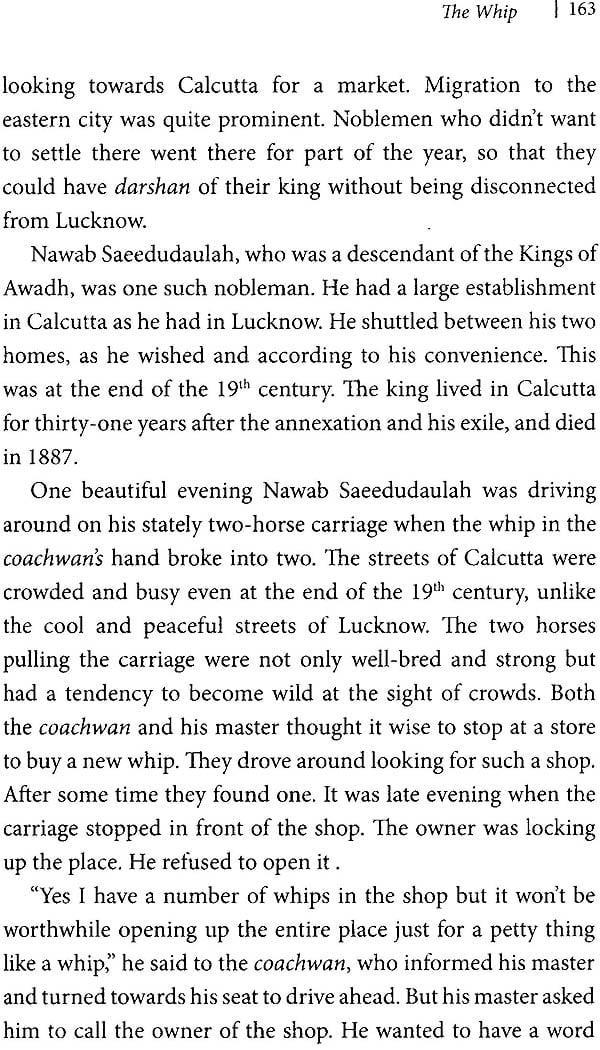
Fida-e-Lucknow (Tales of the City and Its People)
Book Specification
| Item Code: | NAI123 |
| Author: | Parveen Talha |
| Publisher: | Niyogi Books |
| Language: | English |
| Edition: | 2013 |
| ISBN: | 9789381523704 |
| Pages: | 212 |
| Cover: | Paperback |
| Other Details | 8.5 inch x 5.5 inch |
| Weight | 220 gm |
Book Description
This collection is steeped in the flavours and textures of life in Lucknow. Woven through these stories is the history of its Ganga-Jamuni culture and the changes which came over the city and its people in the post-Independence period.
The true hero in these stories is the Lucknow-wala whose affection and loyalty are not restricted to relationships between equals, and religion never comes in the way. Fida-e-Lucknow is also the story of Lucknow’s women.
Be it Qudsia Begum, Zulekha, Amina or Ghengaran-all of them are liberated in the truest sense of the word.
A beautiful blend of history, relationships and vignettes of city life, it will interest all those who enjoy the variety and colour of this and many such cities.
About the Author
Parveen Talha belongs to an old family of Awadh. She was the first Muslim woman to join the civil services through the IAS examinations. After retiring as Member of the Union Public Service Commission in 2009, she lives in Lucknow and spends time writing about the city she loves. Her writings bring alive the history, folklore, and composite culture of Lucknow. She also works for animal rights and has adopted many strays.
Foreword
When Parveen writes she literally holds you by both hands and walks you through pages of time that were intimately left open for her. She takes you on a journey into a way of life of a bygone Awadh and through the milieu, she knows so well, weaves her way into the emotions and gets you hooked on to the plot. She is so enamoured by what she wants to share with the reader that she takes nothing for granted, leaves nothing to chance. Even when she is not holding a pen, her eyes are beaming with a story to hear and a story to tell. I have had the rare experience to work on a short digital film ‘The Shawl’, based on a story by her, and recreate an ambience of a Lucknow which we grew up in. The story has been included in the book. I have also associated with her on a twenty-seven-part serial Husn-e-Jaana set in nineteenth-century Qasbati Awadh. Fascinated by her childlike, romantic and rational imagination I often brainstorm with her on story ideas for films.
This collection of short stories will unfold the beauty of an Awadh that the next generation yearns to be a part of. She rediscovers those footprints that have been erased from the sands of time.
Preface
Much has been written about Lucknow and that incredible ‘tehzeeb’ which left the world gasping. But the Lucknow- wala who took the Indo- Persian culture to the pinnacle of refinement got lost under reams of fable and legend. He does surface sometimes in a Bombay movie as a paan -eating, Sherwani-clad, half-lunatic Nawab, squandering millions on a quail fight or on a tawaif. I must admit Lucknow has had its share of the ridiculous. But for God’s sake! Could a tehzeeb, which the world refuses to forget about, have evolved unless the city’s share of the sublime was predominant? It is time the real Lucknow-wala got the spotlight on himself.
For me the real Lucknow-wala is not just the man of the soil but one who came to Lucknow from any part of the world and got involved in building that glamorous Ganga-Jamuni culture which lives today in legend and history and also in the memories of some people. He may be a Muslim, a Kayasth, a Khatri, a Kashmiri pundit; educated or uneducated, a nobleman, a tongawala or a sweeper, an Indian or a European. So let’s find out his qualities, his characteristics, and his nature. How is he different from people of other cities? What is that makes him stand out? Is it the hyperbole in his language?
The exaggeration in his hospitality? The drama in his humility? Yes all this, but these are just the outward manifestations of a culture. There is something within the nature of these people which make them different. They are a sensitive lot. In their lives a word given to another or tradition established by an ancestor are like principles, to be abided by religiously even at the cost of personal discomfort or loss. When he establishes a relationship he wants to carry it till the end of his life. When he makes sacrifices for another he does it casually without making much of it. He does not parade his own woes. He hides his sufferings behind a mask of happiness and refuses to talk about them, just as he understates his own qualities.
It is surprising how the Lucknow-wala has become known as a person who is relaxed, fun-loving, and unconcerned about serious things. He has really never had it all that easy, as is believed. His leading role in the mutiny of 1857 made him stand for punishment till 1947, and thereafter, the results of the Partition took over. Lucknow (Muslim) families were torn apart just as those of some other North Indian cities. Those who went to the new country never really found a home there, and those who stayed behind had to pay for belonging to a community which had insisted on the Partition. In the post- Partition period the neglect of Urdu and its avoidable death left the Lucknow-wala broken. Finally, what he prized most, the Hindu - Muslim unity, was poisoned by the pulling down of the Babri Masjid in 1992.
Even nature does not spare him. Year in and year out there have been floods which ravage the homes and fields of people. Three floods of the 20th century have been of unusual magnitude. People still talk about the floods of 1960 when boats plied in Hazratganj and also about the 1971 one, when even Butler Palace, where senior state government officials lived, was under water. The first flood of the 20th century, which caused unbearable damage and left innumerable people homeless, was in 1915. Many had to leave Lucknow to find shelter elsewhere. Naubat Rai Nazar, a poet, was one flood-hit citizen who refused to leave Lucknow. Even in a moment of extreme helplessness he wrote a sher which became very popular and acquired the status of a classic:
Kya hai taqat asman ki jo chhudae Lucknow
Lucknow hum pe fida hum Fida-e-Lucknow
[Even Heaven does not have the strength to take (me) away from Lucknow. For Lucknow loves me with a passion and I love Lucknow with a passion]
The owner of Awadh Akhbar, a very popular newspaper of Awadh, was so impressed with this sher that he gave an award of Rs 50/ and a gold ring to the poet and invited him to work for his newspaper.
The skyline of Lucknow has been changing at such a rapid pace in recent years that the citizen cannot be blamed if he finds his memory unable to retain old images. It is not just the structure of the city which has acquired a new look but the social set up and values have also changed to a great extent.
The city stands transformed drastically. For this no one should be blamed. The world is marching ahead and so is Lucknow. As one new image superimposes itself upon another, and is replaced by yet another, like a video cassette fast-forwarded, one wants to stop somewhere and rewind to the times when clocks did move but also left traces behind. It is not exactly nostalgia which persuades one to rewind but there is an intense desire to decipher those traces, and footprints on the face of time which gave the city dignity, variety and colour. In 2011 some people got together and decided to restore to Hazratganj its original look. A Herculean task, no doubt, but they were successful.
It was Chandra Prakash of Universal Book Sellers (a shop in Hazratganj for more than seventy years) who convinced the traders of the Ganj to take up the cudgels to restore its past glory to the bazaar which had not only given them bread and butter but a place of respect in the city. He then got like- minded people of Lucknow under an umbrella called ‘Connect Lucknow’ and together they persuaded the UP. Government to take up the project. By 2012 their efforts bore fruit. From a defaced market, emerged the Ganj of a long forgotten era, in all its elegance, in all its grace.
In every nook and corner of Lucknow, in every movement of the hands of the clock I see a story, which I want to share with others, but I was never sure whether anyone would understand the ramblings of a person’s mind who herself is a child of the change which invaded the city. At last I gathered courage to present before readers a collection of stories, written over a period of 35 years, about Lucknow and its citizens who love Lucknow like no other city is loved. The book carrying stories of such people can only be called “Fida-e-Lucknow”
Contents
